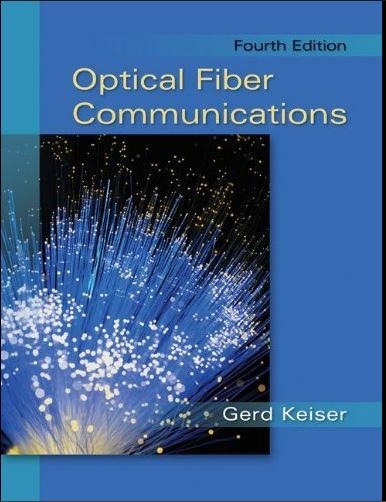
Optical Fiber Communications 4th Edition by Gerd Keiser
Edition 4ISBN: 978-0073380711
Optical Fiber Communications 4th Edition by Gerd Keiser
Edition 4ISBN: 978-0073380711 Exercise 3
The equalizer in an optical receiver normally is a linear frequency-shaping filter used to mitigate the effects of signal distortion and intersymbol interference. To account for the fact that pulses arrive rounded and distorted at the receiver, the binary digital pulse train incident on the photodetector can be described by 
Here P ( t ) is the received optical power, T b is the bit period, b n represents the energy in the n th pulse ( b n = b 0 for a 0 pulse and b 1 for 1 pulse), and h p ( t ) is the received pulse shape.
Show that the following pulse shapes satisfy the normalization condition
( a ) Rectangular pulse ( = constant)
( b ) Gaussian pulse
( c ) Exponential pulse

Here P ( t ) is the received optical power, T b is the bit period, b n represents the energy in the n th pulse ( b n = b 0 for a 0 pulse and b 1 for 1 pulse), and h p ( t ) is the received pulse shape.
Show that the following pulse shapes satisfy the normalization condition

( a ) Rectangular pulse ( = constant)

( b ) Gaussian pulse

( c ) Exponential pulse

Explanation
(a)
Consider the following repulsive fun...
Optical Fiber Communications 4th Edition by Gerd Keiser
Why don’t you like this exercise?
Other Minimum 8 character and maximum 255 character
Character 255


